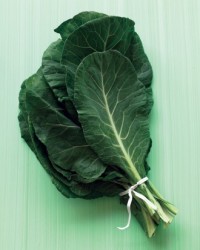
January 5- January 11, 2014
Market Outlook
Lettuce:
The Iceberg market is steady at lower levels with good supplies out of Yuma. We are seeing minor quality defects on inbound affecting mainly the outer wrapper leaves.
Leaf:
Leaf market is steady but with a stronger feel and good supplies out of Yuma. We are seeing minor quality defects (pinking on rib, tip or fringe burn) on inbound. Overall quality is good.
Broccoli:
Broccoli market is steady to just a bit lower with good quality.
Cauliflower:
The cauliflower market is steady with good quality.
Carrots:
Carrot market has continued to inch up in price, quality is still very good.
Celery:
The Celery market is declining with better supplies becoming available out of both Oxnard and Yuma. Florida has also begun to harvest celery, but supplies are limited. Quality has been very good from the West coast.
Strawberries:
We have been in full swing now with Florida berries. Quality is getting better. Cost is lower and will likely continue to drop.
Potatoes:
The market on cartons has continued to rise this week, fob and freight is the cause of higher pricing.
Onions:
The market on Onions has also continued to go up and will get stronger as we get into January and February.
Citrus:
The Lemon and Orange market is stronger due to very cold weather in the growing region. Shippers are struggling to come up with small fruit. 113’s and 138’s are particularly tough to find.
Cucumbers:
The Cucumber market has remained on the high side this week due to cold and trucking freight.
Peppers:
Pepper market has taken a jump this week due to availability. Sizing and quality are good to fair.
Tomatoes:
Tomato market is steady at lower levels with good supplies. Excellent value.
Shippers are advising us that we will see some epidermal peel and freeze damage on lettuce and leaf items in the weeks to come.
Feature of the Week
This week Primo is featuring collard greens. Collard greens — a staple in many Southern dishes — add healthy nutrients to any meal. Serve collard greens as a side or part of the main course. When dealing with picky eaters, sneak collards into foods like stews and pastas to add greens to the recipe. Collard Greens are in the cabbage family, closely related, and very similar to kale. Collards have a medium green color, smooth texture, and oval-shaped leaves. On the flavor scale, collards are several degrees milder than kale.
Recipe of the Week
Shrimp with Bacon and Collards
Ingredients
Coarse salt and ground pepper
1 cup long-grain white rice
4 slices bacon, thinly sliced crosswise
1 garlic clove, minced
1 medium yellow onion, diced medium
1 can (28 ounces) diced tomatoes
1 bunch collard greens, center ribs removed, leaves sliced crosswise
2 teaspoons extra-virgin olive oil
1 pound large shrimp, peeled and deveined
Hot-pepper sauce, such as Tabasco, for serving
Cook’s Note:
To prep the collard greens, stack a few leaves, fold them in half lengthwise, and cut out the tough center rib. Then, with the leaves folded, slice crosswise.
Directions
Step 1
In a small saucepan, bring 1 1/2 cups salted water to a boil. Add rice and return to a boil. Cover, reduce to a simmer, and cook until rice is tender, about 15 minutes. Remove pan from heat and let stand 5 minutes. Fluff rice with a fork.
Step 2
Meanwhile, in a large skillet, cook bacon, stirring occasionally, over medium until browned and crisp, about 10 minutes. With a slotted spoon, transfer bacon to paper towels to drain. Add garlic and onion to skillet; season with salt and pepper. Cook, stirring occasionally, until onion is soft, 5 minutes. Add tomatoes and collards; season with salt and pepper. Cover and cook until collards are tender, about 10 minutes. Transfer to a medium bowl. Wipe skillet clean.
Step 3
In skillet, heat oil over medium-high and add shrimp. Season with salt and pepper and cook, undisturbed, 2 minutes. Add collard mixture and cook until shrimp are opaque throughout, 2 minutes. To serve, spoon mixture over rice and top with bacon and a few dashes hot sauce.
Fun Facts of the Week
-
The flavorful liquid left in the pot from cooking collards is known in the South as “pot likker”
-
A southern tradition in the United States, collard greens are eaten on New Year’s Day to ensure wealth in the coming year because their leaves resemble folded money.
-
Collard greens were grown by the ancient Greeks and Romans.


